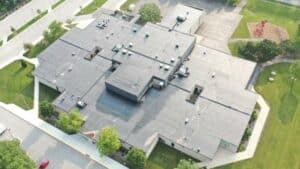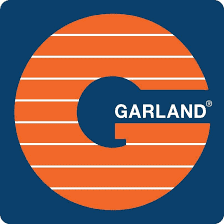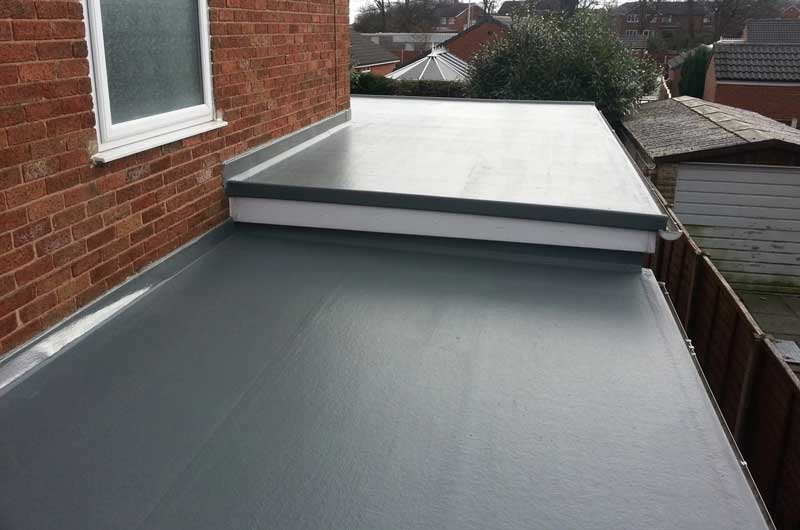EPDM Roofing
Where durability meets versatility. Ethylene Propylene Diene Monomer (EPDM) roofing has become a staple in the construction industry, offering a reliable solution for flat and low-slope roofs. It is an extremely durable synthetic rubber roofing membrane (ethylene propylene diene terpolymer) widely used in low-slope buildings. Its two primary ingredients, ethylene and propylene, are derived from oil and natural gas. EPDM is available in both black and white, and is sold in a broad variety of widths, ranging from 7.5 feet to fifty feet, and in two thicknesses, 45 and 60 mils. It can be installed either fully adhered, mechanically attached or ballasted, with the seams of the roofing system sealed with liquid adhesives or specially formulated tape.
Understanding EPDM Roofing
EPDM is a synthetic rubber roofing membrane composed of ethylene, propylene, and diene monomer. The unique molecular structure of it imparts exceptional durability, weather resistance, and flexibility to the material. EPDM roofing is available in large sheets or rolls, making it an efficient choice for covering expansive roof surfaces.
When is it Used?
EPDM roofing has found its place across a spectrum of applications due to its adaptability and durability:
- Commercial and Industrial Buildings: It is commonly used in the construction of commercial and industrial buildings with flat or low-slope roofs. Its ability to cover large areas seamlessly, combined with its resistance to weathering, makes it a popular choice for businesses looking for a cost-effective and durable roofing solution.
- Residential Construction: Homeowners seeking a reliable roofing material for flat or low-slope roofs often turn to EPDM. Its versatility and ability to withstand various weather conditions make it a favored option for residential applications, providing long-lasting protection for homes.
- Green Roofing Systems: This roofing is often integrated into green roofing systems, which involve the installation of vegetation and sustainable materials. The rubber membrane’s compatibility with green roofing makes it an excellent choice for environmentally conscious building designs.
 Benefits of EPDM Roofing for Building Owners
Benefits of EPDM Roofing for Building Owners
- Durability: EPDM roofing is renowned for its durability and longevity. The material is resistant to weathering, UV radiation, and ozone exposure, ensuring that it maintains its structural integrity over the years. This durability translates to a longer lifespan for the roof, reducing the need for frequent repairs or replacements.
- Weather Resistance: It exhibits excellent resistance to a wide range of weather conditions, including extreme temperatures, hail, and heavy rainfall. Its ability to withstand the elements makes it a reliable choice for buildings in diverse climates, providing year-round protection against the forces of nature.
- Flexibility and Expansion: EPDM roofing is highly flexible, allowing it to accommodate building movements and structural shifts without cracking or tearing. This flexibility is crucial for buildings in areas prone to seismic activity, ensuring that the roofing system can adapt to the dynamic nature of the structure.
- Energy Efficiency: This roofing is available in both black and white colors, allowing building owners to choose based on their energy efficiency goals. The white EPDM reflects sunlight, reducing the absorption of heat and contributing to a cooler building interior. This reflective quality can result in lower energy consumption for cooling, especially in warmer climates.
- Low Maintenance Requirements: This roofing requires minimal maintenance, adding to its appeal for building owners. The material is resistant to mold and algae growth, and its smooth surface prevents the accumulation of dirt and debris. Periodic inspections and routine cleaning are usually sufficient to keep an EPDM roof in optimal condition.
- Ease of Installation: It is known for its ease of installation, which can lead to cost savings in labor and material expenses. The large sheets or rolls are applied using various methods, including ballasted, mechanically attached, or fully adhered systems. This efficiency in installation makes EPDM a practical choice for projects with tight timelines.
- Cost-Effectiveness: EPDM roofing offers a favorable cost-to-benefit ratio. Its durability, low maintenance requirements, and energy efficiency contribute to long-term cost savings for building owners. Additionally, the ease of installation can reduce labor costs, making it an economically viable roofing solution.
- Recyclability: EPDM roofing is recyclable, adding an environmentally friendly aspect to its list of benefits. At the end of its lifespan, the material can be recycled into new products, reducing the environmental impact associated with roofing materials.
Conclusion
In conclusion, EPDM roofing stands as a robust and versatile solution for building owners seeking durability, weather resistance, and cost-effectiveness. Whether applied to commercial, industrial, or residential structures, this roofing offers a reliable shield against the elements. From its flexibility to its energy efficiency and recyclability, it stands out as a material that not only protects buildings but also aligns with the evolving standards of sustainability. Consider EPDM roofing and experience the lasting benefits of a system designed for resilience and performance.

